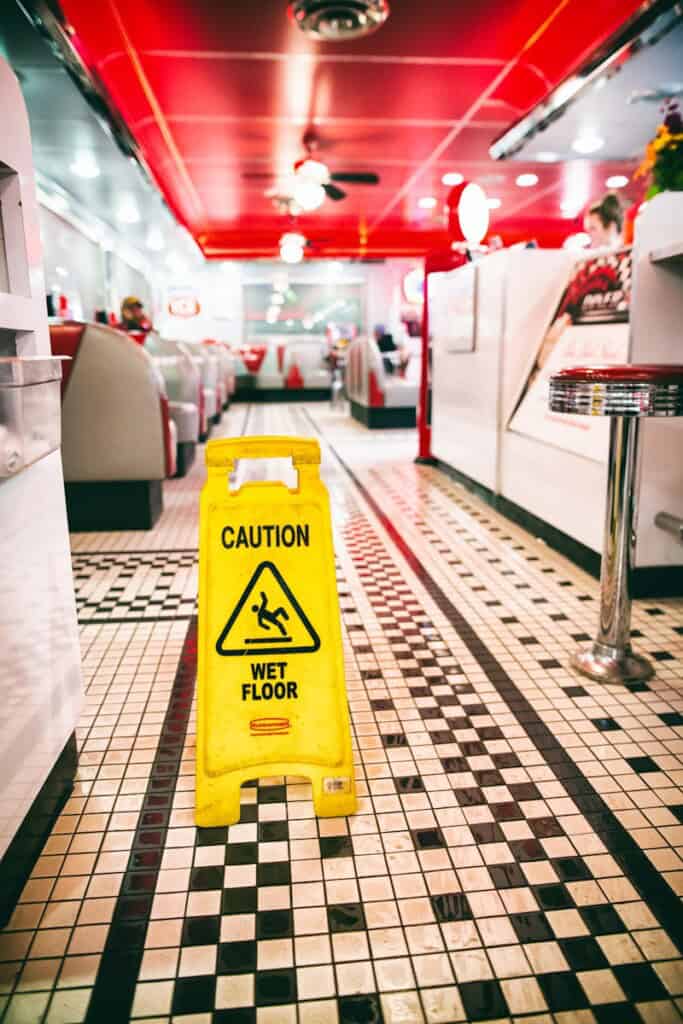Slips and falls are among the most common workplace accidents, and they often result in serious injuries, costly lawsuits, and lasting reputational damage. A simple tool, such as a wet floor sign, can go a long way in preventing these incidents, but only if it’s used effectively. An expert lawyer for slip and fall accident attests that just placing a sign near a spill isn’t enough. Businesses need to think strategically about how and where they use these signs to maximize visibility and ensure safety. Here are five crucial tips to make sure your wet floor signs are seen, understood, and doing their job.

1. Choose Highly Visible Signage
Not all wet floor signs are created equal. Bright colors like yellow or orange are standard for a reason; they grab attention. But color alone isn’t enough. Your signage should include large, clear text and recognizable symbols, such as the universal symbol for slipping. Multilingual warnings or signs with pictograms are also a must in diverse workplaces where not everyone speaks English. Size matters too: signs should be tall enough to catch someone’s eye even in a crowded or busy area. If your wet floor sign blends in with its surroundings or is too small to notice from a distance, it’s essentially useless.
2. Position Signs Strategically
Where you place the sign is just as important as the sign itself. Make sure it’s directly in the path where people will be walking, not tucked into a corner or partially hidden behind equipment. Place the sign before the wet area so that it serves as a true warning, not an afterthought. If the area is large, like a long hallway or expansive lobby, use multiple signs to cover all entry points. Visibility from various angles helps ensure that anyone approaching the wet floor has time to see and react.
3. Keep Signs Upright and Unobstructed
It may sound basic, but an overturned or blocked wet floor sign can make a situation worse by creating a trip hazard or giving a false sense of security. Ensure that signs are sturdy and have a wide enough base to remain upright even in high-traffic or breezy environments. Periodically check that nothing, such as carts, boxes, or other signs, is blocking the warning from view. Train your staff to take immediate action if they notice a sign that has fallen or been pushed aside.
4. Use Signs Only When the Floor Is Wet
One common mistake businesses make is leaving wet floor signs out long after the hazard has been cleaned up. This desensitizes employees and customers to the warning, making them more likely to ignore the sign in the future. Overuse diminishes the urgency of the message. Wet floor signs should only be used when a genuine risk is present, such as during cleaning, after a spill, or when dealing with leaks. Once the floor is dry, the sign should be promptly removed to maintain credibility and trust.
5. Integrate Wet Floor Protocol into Staff Training
Even the best signage won’t be effective if your team doesn’t understand when and how to use it. Make wet floor safety part of your routine employee training. Teach staff not just to place signs but to assess the area for full coverage, monitor the hazard, and remove the signs when appropriate. Encourage employees to report spills or wet areas immediately, and assign responsibility for managing and inspecting signage throughout shifts. A proactive team is your first and best line of defense against slip-and-fall accidents.
Final Thoughts: Stay Safe and Legally Covered
Making clever use of wet floor signs isn’t just about protecting your customers and employees; it’s also about protecting your business from costly liability. When an accident occurs, courts often scrutinize whether your business took reasonable steps to prevent injury. Following these five tips can help prove that you did. But if a slip and fall does occur on your premises, it’s important to understand your legal rights and responsibilities. Don’t wait until you’re in court to get help; contact an experienced lawyer for slip and fall accident to ensure your business is covered and your reputation remains intact.